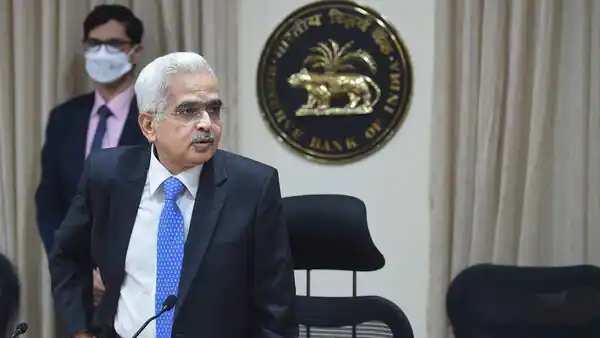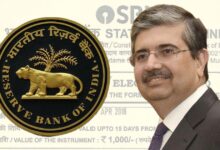RBI Commits to Attaining 4% Inflation Target: Governor Shaktikanta Das’s Determined Approach

RBI Commits to Attaining 4% Inflation Target: Governor Shaktikanta Das’s Determined Approach
In a resolute move aimed at fostering economic stability and bolstering financial security, the Reserve Bank of India (RBI) has steadfastly set its focus on aligning inflation rates with a 4% target. This commitment, reiterated by RBI Governor Shaktikanta Das, underscores the central bank’s unwavering dedication to ensuring price stability, a crucial foundation for sustainable economic growth and consumer confidence.
Governor Shaktikanta Das, known for his pragmatic and strategic approach, has emphasized the pivotal role of maintaining inflation within the 4% range. Inflation, the general increase in prices of goods and services, can have far-reaching implications for the economy. When inflation is too high, it erodes purchasing power and disrupts financial planning for households and businesses alike. Conversely, when it is too low, it might indicate an economic slowdown or deflationary pressures, hampering investment and economic expansion.
The RBI’s mission to curtail inflation within the 4% range is not an arbitrary choice but a well-calibrated strategy based on careful consideration of economic conditions and global trends. This target aligns with international standards and best practices, aiming to strike a balance between promoting economic growth and preventing runaway price hikes.
Historically, India has grappled with fluctuating inflation rates, which have often led to economic uncertainties. High inflation rates have the potential to derail growth, deter foreign investments, and burden fixed-income households. Understanding these challenges, Governor Das’s resolute stance on maintaining the 4% inflation target reflects his conviction in the RBI’s ability to use its monetary tools effectively.

One of the key instruments at the RBI’s disposal is the monetary policy. By adjusting key interest rates such as the repo rate and the reverse repo rate, the central bank can influence borrowing costs, consumer spending, and investments. Inflation targeting complements these efforts, as it guides the RBI’s decision-making process. By setting a clear target, the RBI ensures that its policies are aligned with the overarching goal of price stability.
A crucial factor in achieving the 4% inflation target is the complex interplay of demand and supply. When demand for goods and services surpasses supply, it can lead to upward pressure on prices. This demand-pull inflation can be managed through prudent monetary measures. Similarly, supply-side factors, such as disruptions in production or increases in input costs, can also trigger inflation. The RBI’s commitment to its target demonstrates its readiness to address both demand and supply-driven inflation dynamics.
Global economic conditions also play a significant role in shaping domestic inflation. Fluctuations in international oil prices, for instance, can influence fuel costs, subsequently impacting transportation and production expenses. Governor Das’s determination to target 4% inflation indicates the RBI’s vigilance in managing external factors that might impact India’s economic stability.
It’s important to note that achieving a 4% inflation rate is not a static process; it requires a dynamic and adaptable approach. Economic shocks, policy changes, and unforeseen events can all disrupt inflation trajectories. The RBI’s commitment involves ongoing monitoring and assessment, allowing it to make necessary adjustments to its policies as circumstances evolve.

Governor Das’s resolute commitment to maintaining the 4% inflation target is also a testament to the RBI’s independence. Central banks around the world often strive to insulate monetary policy from short-term political considerations, allowing them to make decisions that are in the best long-term interest of the economy. This autonomy enhances the credibility of the central bank and fosters investor confidence.
In this pursuit of maintaining the 4% inflation target, collaboration between the RBI and the government becomes pivotal. Fiscal policies, which involve government spending and taxation, can impact inflation trends. A harmonized approach between monetary and fiscal policies can amplify the effectiveness of inflation management, further solidifying economic stability and growth prospects. This synergy between the RBI and the government reflects a unified commitment to the well-being of the nation’s economy and its citizens.

In conclusion, Governor Shaktikanta Das’s determined commitment to aligning inflation rates with a 4% target showcases the RBI’s dedication to fostering economic stability, promoting sustainable growth, and safeguarding the well-being of consumers and businesses.
This steadfast approach, supported by well-calibrated monetary tools and a keen awareness of domestic and global economic dynamics, underscores the RBI’s role as a custodian of financial security. As the journey towards achieving this target unfolds, the RBI’s resilience and adaptability will play a crucial role in shaping India’s economic trajectory.






